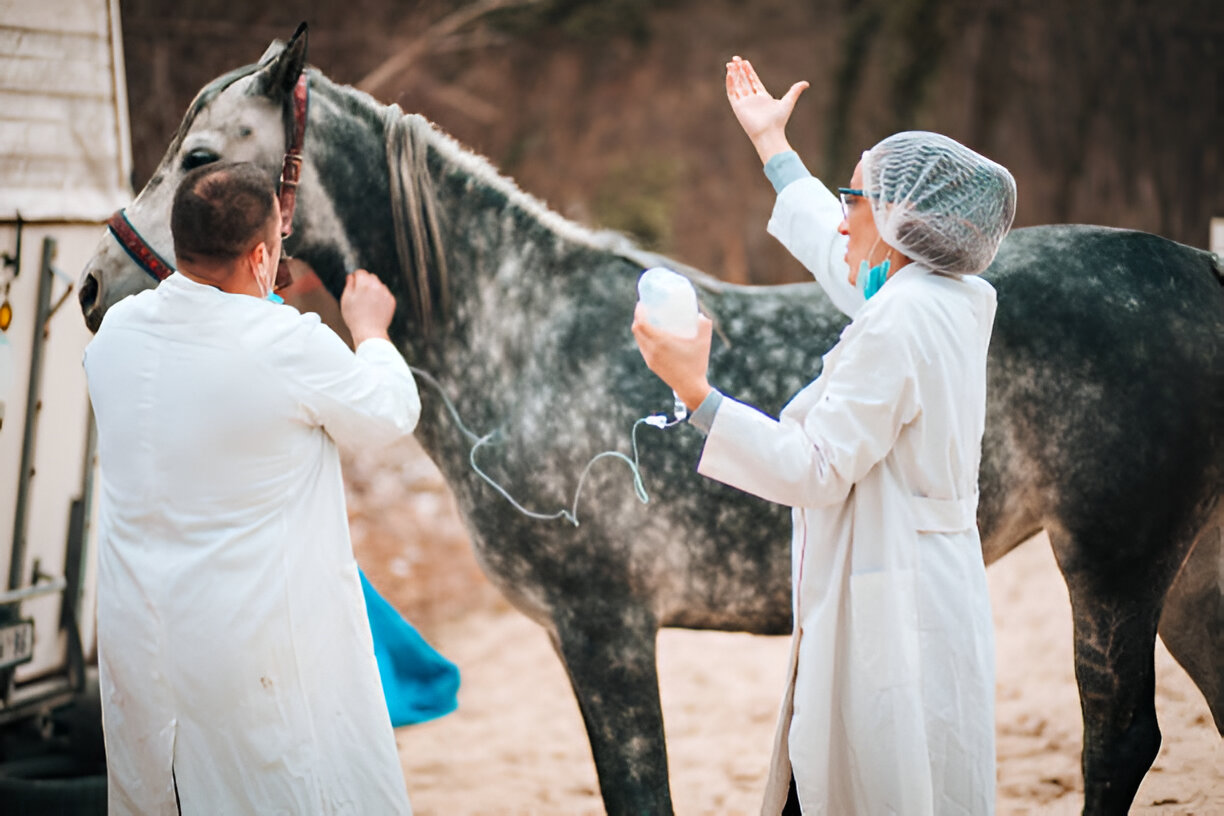Toltrazuril is a powerful anti-parasitic medication that is gaining recognition for its effectiveness in treating parasitic infections in horses, particularly coccidia and equine protozoal myeloencephalitis (EPM). These conditions can severely impact a horse’s health and performance, making timely and accurate treatment essential. Understanding the appropriate dosage of Toltrazuril is crucial for horse owners and caretakers to ensure effective treatment while minimizing potential side effects. This guide provides a comprehensive overview of Toltrazuril’s mechanism of action, dosage recommendations, and tips for safe administration.
How Toltrazuril Works in Horses
Toltrazuril belongs to a class of drugs known as triazinones, which are specifically designed to target protozoan parasites. The drug’s primary action is to disrupt the life cycle of these parasites, leading to their eventual elimination from the host’s system.
Mechanism of Action
Toltrazuril works by interfering with the metabolic processes of parasites, particularly coccidia. It inhibits the development of the parasite’s oocysts (a resistant form of the parasite), which prevents them from maturing and reproducing. In the case of EPM, caused by the protozoan Sarcosystis neurona, Toltrazuril targets the encysted forms of the organism in the horse’s tissues. This disruption not only clears existing infections but also helps prevent future outbreaks.
Research has shown that Toltrazuril is effective in reducing the oocyst shedding in feces, leading to a decrease in environmental contamination and potential reinfection. The drug is well-absorbed in the gastrointestinal tract, making it a reliable option for treating parasitic infections in horses.
Correct Toltrazuril Dosage for Horses
When administering Toltrazuril to horses, proper dosage is vital for ensuring the medication’s effectiveness while minimizing the risk of side effects.
Dosage Guidelines
The recommended dosage of Toltrazuril for horses typically ranges between 10 to 20 mg/kg of body weight, depending on the severity of the infection and the horse’s overall health. For example, a horse weighing 500 kg may require a dose of 5000 mg to 10000 mg.
Calculating the Dosage
Weigh the Horse: Accurately determine the horse’s weight using a scale or a weight tape.
Select the Dosage: Based on the horse’s condition (mild or severe), choose a dosage within the recommended range.
Administer Accordingly: Use the appropriate formulation of Toltrazuril (liquid or paste) that allows for accurate measurement and administration.
Importance of Veterinary Consultation
Before starting treatment, it is crucial to consult with a veterinarian. They can provide tailored recommendations based on the horse’s specific health needs, age, and any concurrent medical conditions. A veterinarian’s guidance ensures that the horse receives the correct dosage and reduces the risk of complications.
Administering Toltrazuril Safely
Administering Toltrazuril correctly is essential for the medication’s success and the horse’s well-being.
Tips for Administration
Formulation Choice: It is available in various formulations, including oral suspensions and pastes. Choose the form that is easiest for you to administer and ensure it is suitable for your horse’s size.
Administering Oral Medication:
– Ensure the horse is calm and secure.
– Use a syringe or dosing device to deliver the medication directly into the horse’s mouth, preferably towards the back of the tongue for easier swallowing.
– Follow up with water or a small amount of feed to ensure the medication is swallowed completely.
Timing: Administer Toltrazuril as directed by your veterinarian, usually once a day for a specified duration. Maintain a consistent schedule to ensure optimal results.
Monitoring for Side Effects
While Toltrazuril is generally well-tolerated, monitoring your horse for potential side effects is essential. Common side effects may include:
– Mild gastrointestinal upset (diarrhea, colic)
– Lethargy or reduced appetite
– Allergic reactions (rare)
If any of these symptoms occur or if your horse shows signs of distress, contact your veterinarian immediately for guidance.
Conclusion
Toltrazuril is a valuable tool in treating parasitic infections in horses, particularly coccidia and EPM. By following the recommended dosage guidelines and consulting with a veterinarian, horse owners can ensure the safe and effective use of this medication. Remember, accurate dosing and administration are key to achieving the best outcomes for your horse’s health. By staying informed and attentive to your horse’s needs, you can effectively combat these challenging parasitic infections and promote a quicker recovery.

